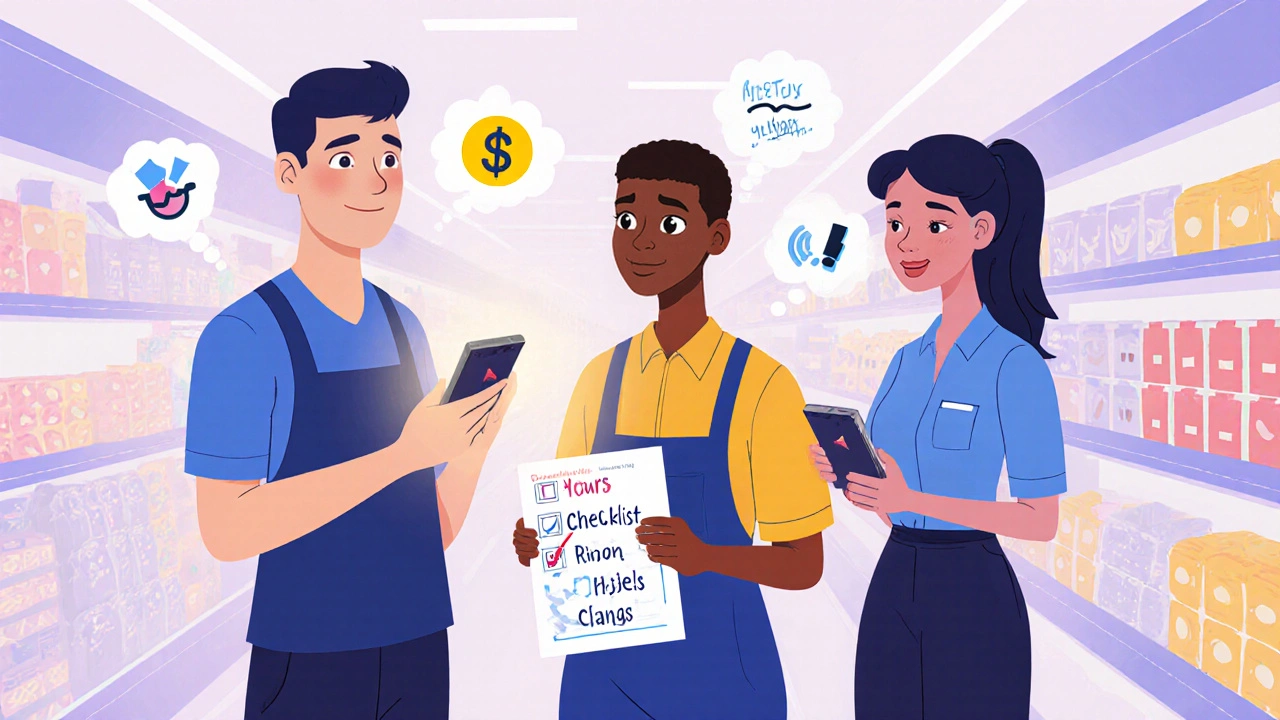Micro-Learning for Time-Constrained Employees: Quick, Effective Training That Fits Into Busy Days
 Oct, 25 2025
Oct, 25 2025
Most employees don’t have time for hour-long training sessions. Between back-to-back meetings, urgent emails, and deadlines, finding 30 minutes to sit through a webinar feels impossible. Yet companies still expect staff to learn new software, compliance rules, or leadership skills. The solution isn’t more time-it’s smarter content. Micro-learning delivers training in bursts of 3 to 7 minutes, designed for real life, not ideal schedules.
What Micro-Learning Actually Looks Like
Micro-learning isn’t just a short video. It’s a focused unit of learning that answers one specific question or solves one small problem. Think of it like a recipe card instead of a cookbook. Instead of a 20-minute module on ‘Customer Service Best Practices,’ you get a 4-minute video titled ‘How to De-escalate an Angry Customer in Under 60 Seconds.’
Examples include:
- A 3-minute animated explainer on how to file a new expense report in the updated system
- A 5-minute audio checklist for GDPR compliance before sending client data
- A 7-minute interactive quiz that walks you through identifying phishing emails
- A printable one-pager with 5 key phrases to use during performance reviews
These aren’t snippets of longer courses. They’re built from the ground up to stand alone. Each one has a clear goal, a single action, and ends with a measurable outcome-like ‘You can now identify three red flags in a suspicious email.’
Why It Works for Busy Employees
Neuroscience backs this up. The brain retains information better when it’s spaced out and consumed in small doses. A 2023 study by the Journal of Applied Psychology found that employees who completed micro-learning modules retained 87% of the material after 30 days, compared to 42% for those who took traditional 60-minute trainings.
But retention isn’t the only win. Micro-learning removes psychological barriers:
- No need to block off time-you can do it while waiting for a meeting to start
- No guilt about pausing mid-task-you can finish it later
- No overwhelm-just one thing to focus on, not a whole curriculum
One sales manager in Chicago told her team to watch a 3-minute video on objection handling before each client call. Within six weeks, her team’s conversion rate rose by 19%. Why? Because they applied the lesson immediately-not weeks later, after forgetting half of it.
How to Design Effective Micro-Learning
Not every short video counts as micro-learning. Bad ones are just cut-down lectures. Good ones follow three rules:
- One goal per module-If it tries to teach two things, it fails.
- Start with the answer-Don’t waste time with fluff. Get to the point in the first 10 seconds.
- End with action-Tell the learner exactly what to do next. ‘Click here to try it,’ ‘Use this phrase tomorrow,’ ‘Send this template to your manager.’
Structure matters too. The most effective formats are:
- Video (under 5 minutes)-Best for demonstrations, like using a new tool
- Interactive checklists-Great for compliance or safety steps
- Audio summaries-Perfect for commutes or walking between offices
- Flashcards with spaced repetition-Ideal for memorizing policies, acronyms, or product specs
Also, avoid talking heads. Employees tune out when they see someone in a suit lecturing. Use screen recordings, animations, or real-life scenarios instead.

What Micro-Learning Isn’t
It’s not:
- A 15-minute YouTube tutorial you found online
- A PDF handout with 10 bullet points and no context
- A quiz with 50 random questions
- A mandatory 10-minute popup that interrupts your workflow
Micro-learning must be intentional, relevant, and designed for the learner’s context. If it feels like busywork, it won’t stick.
Real-World Examples That Work
Here’s what companies are actually doing right:
- Accenture sends a daily 3-minute ‘Skill Spark’ via Slack-today it’s ‘How to use the new CRM filter,’ tomorrow it’s ‘Three ways to ask for feedback.’ Employees opt in and engage at their own pace.
- Walmart uses micro-learning on handheld devices for cashiers. Before each shift, they get a 2-minute video on a new return policy or pricing rule. Completion rates jumped from 45% to 92%.
- Siemens built a library of 500+ 4-minute modules on equipment repair. Technicians access them on tablets during downtime. No more waiting for a trainer to be available.
These aren’t gimmicks. They’re systems built around how people actually work.

Getting Started Without a Big Budget
You don’t need a fancy LMS or a video team. Start small:
- Pick one pain point: What’s the most common mistake employees make? (e.g., misfiling expenses, forgetting password resets)
- Create one 4-minute solution: Use your phone to record a screen walkthrough or write a simple checklist.
- Share it in a team chat or email with a clear subject: ‘Fix this in 3 minutes before your next invoice.’
- Ask for feedback: ‘Did this help? What else do you need?’
- Repeat. Build a library one module at a time.
Within three months, you’ll have a collection of 10-15 modules that solve real problems. That’s more impact than most companies get from their annual training budget.
Measuring Success
Don’t track completion rates alone. Ask:
- Did behavior change? (e.g., fewer errors, faster task completion)
- Did people ask for more? (If they’re requesting additional modules, you’re winning)
- Was it used when needed? (Check usage patterns-are they opening it right before a task?)
One HR team tracked how often employees opened their ‘Onboarding Micro-Modules’ in the first 30 days. Those who watched at least three modules were 63% more likely to stay past six months. That’s not just learning-that’s retention.
The Future Is Bite-Sized
Work isn’t getting less busy. Training can’t keep asking for more time. The companies that win are the ones that meet employees where they are-between tasks, on mobile devices, during quiet moments.
Micro-learning isn’t about cutting corners. It’s about respecting people’s time and attention. It’s training that doesn’t feel like training. It’s knowledge that sticks because it’s delivered when it’s needed, not when it’s convenient for HR.
If your team is overwhelmed, overwhelmed by training, start small. Build one module. Test it. Then build another. In six months, you won’t recognize how much smarter, faster, and more confident your team has become.
Is micro-learning only for tech companies?
No. Micro-learning works for any industry. Retail workers use it to learn new POS systems. Nurses review infection control steps in 90 seconds between shifts. Factory teams get safety reminders before operating machinery. It’s not about the job-it’s about the time crunch.
Can micro-learning replace full certification courses?
Not entirely. For complex certifications like PMP or HIPAA compliance, you still need deeper learning. But micro-learning can be the companion-helping employees review key points, stay current, and prepare for exams without spending hours in front of a screen.
How do I keep employees from ignoring micro-learning?
Make it useful, not mandatory. If employees see that a 3-minute module saves them 30 minutes of confusion later, they’ll use it. Link it to real tasks. Show how it improves their day. Avoid making it another checkbox on a performance review.
What tools do I need to create micro-learning?
You can start with free tools: Loom for screen recordings, Canva for one-pagers, Anchor for audio clips, or even Google Forms for quick quizzes. Many learning platforms like TalentLMS, EdApp, or Axonify offer built-in micro-learning templates. But the best tool is your team’s real-world experience-use that to shape the content.
How often should I release new micro-learning modules?
Start with one per week. Too many at once overwhelms people. Once you have a rhythm, aim for 1-2 new modules every two weeks. Consistency matters more than volume. A steady stream of useful, bite-sized content builds trust and habit.
Aafreen Khan
October 30, 2025 AT 01:12Pamela Watson
October 31, 2025 AT 22:27michael T
November 1, 2025 AT 17:15Christina Kooiman
November 2, 2025 AT 01:03Stephanie Serblowski
November 2, 2025 AT 03:44Renea Maxima
November 3, 2025 AT 01:13Jeremy Chick
November 4, 2025 AT 09:27Sagar Malik
November 5, 2025 AT 18:52Seraphina Nero
November 7, 2025 AT 13:09Megan Ellaby
November 9, 2025 AT 12:44Rahul U.
November 9, 2025 AT 20:25E Jones
November 10, 2025 AT 19:23Barbara & Greg
November 11, 2025 AT 09:56selma souza
November 13, 2025 AT 01:55Frank Piccolo
November 14, 2025 AT 01:15James Boggs
November 15, 2025 AT 03:28Addison Smart
November 16, 2025 AT 14:36